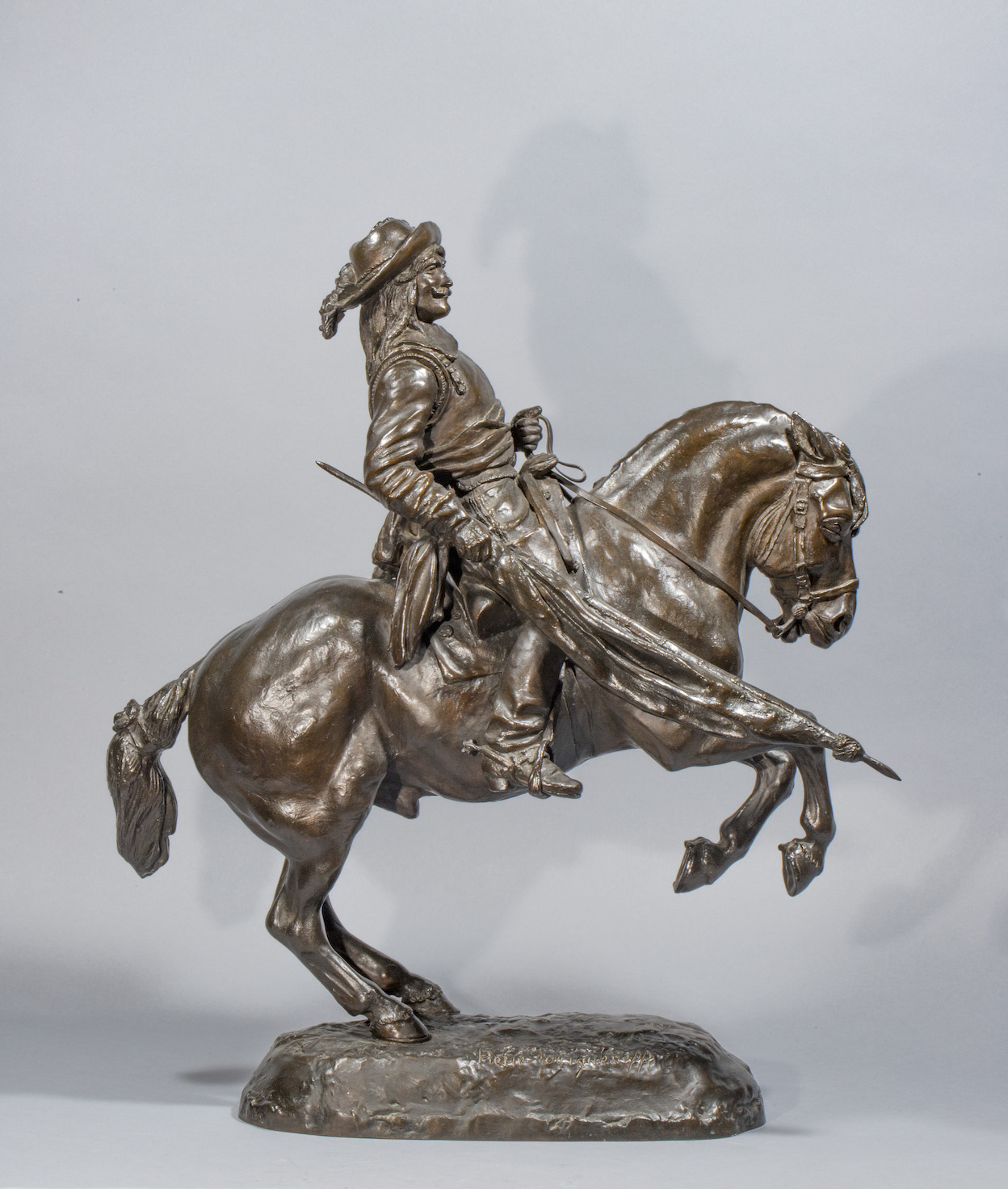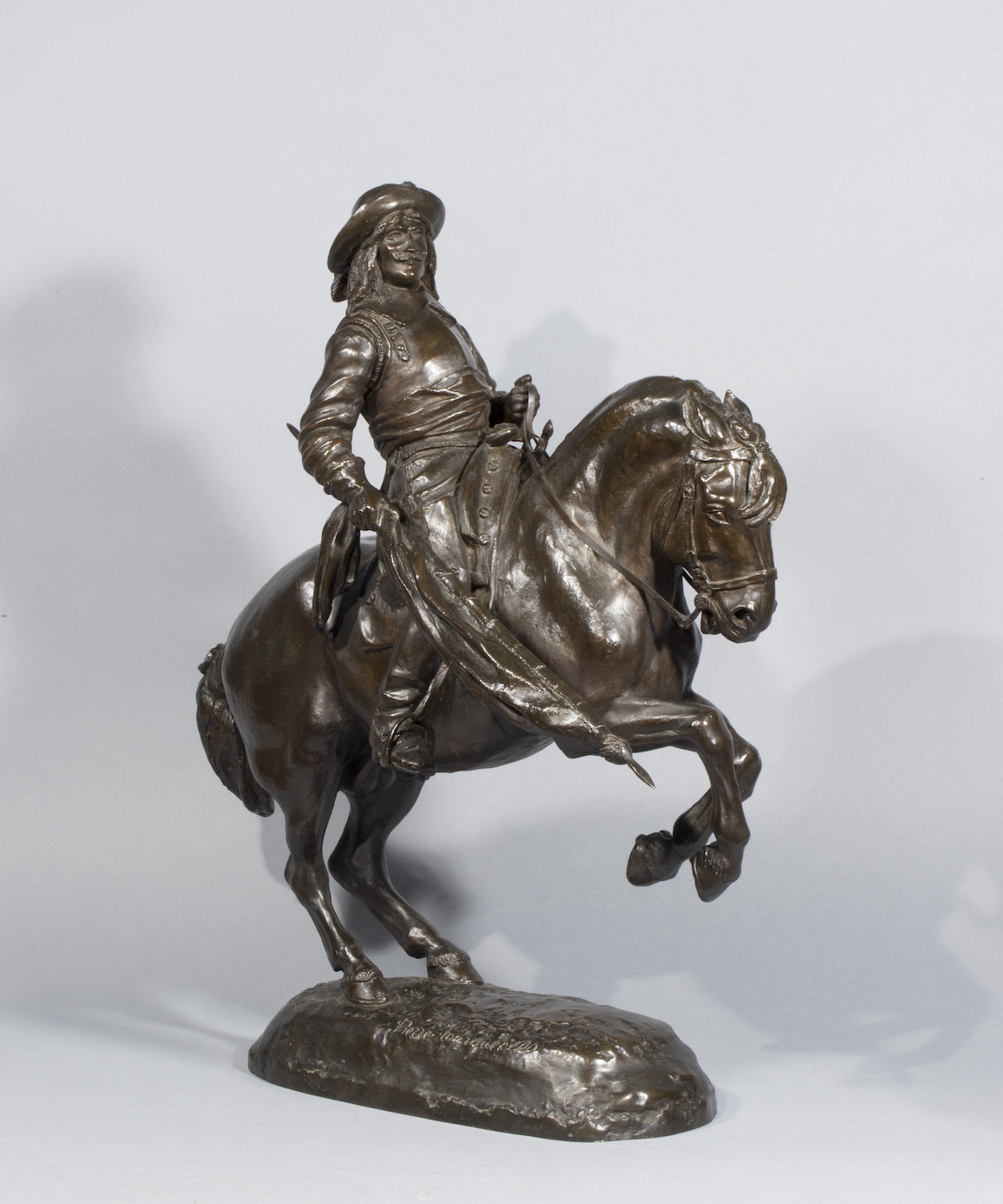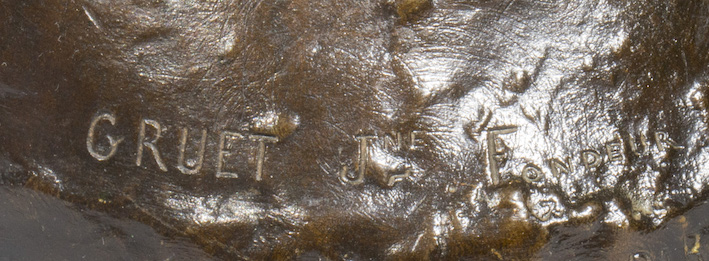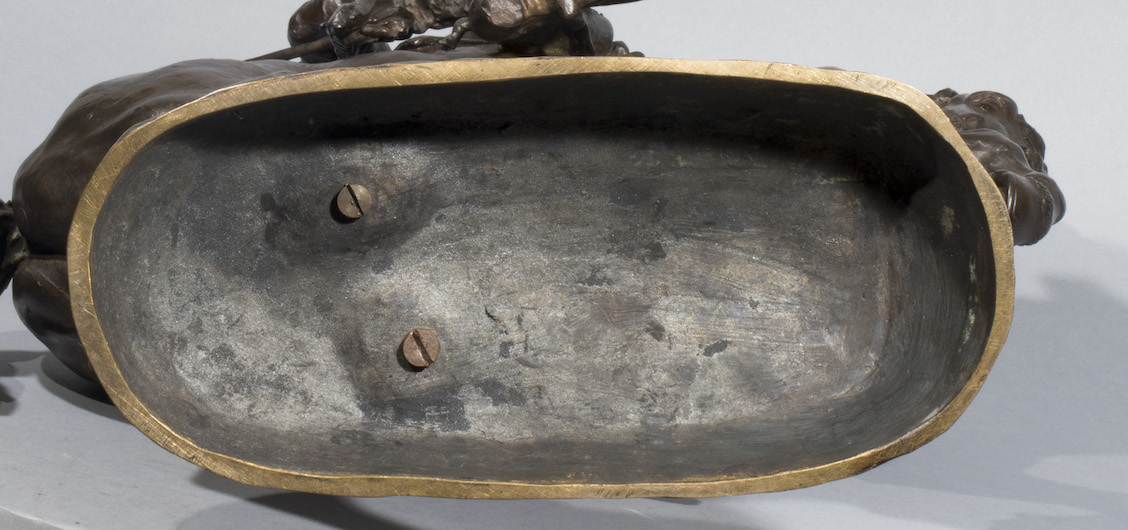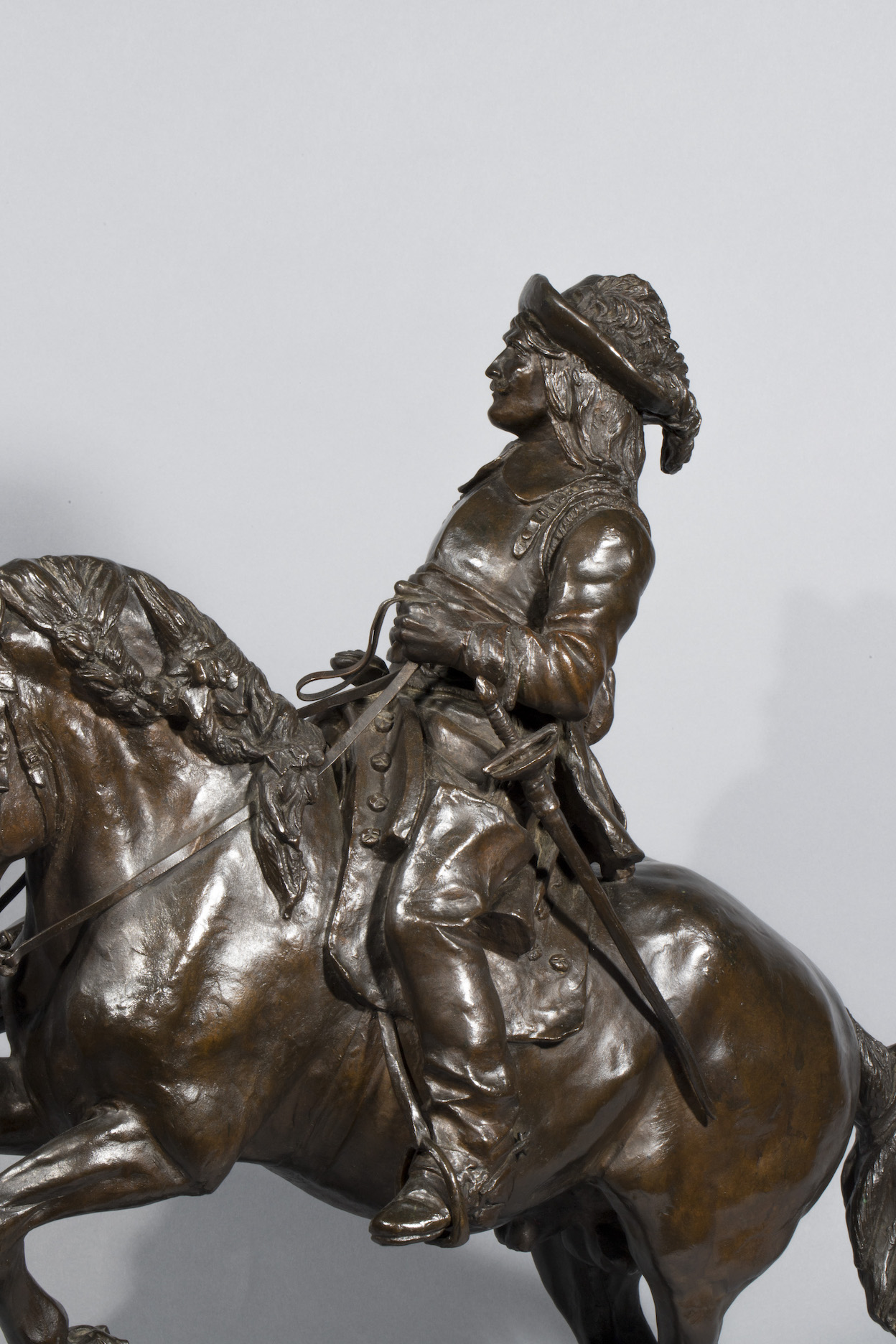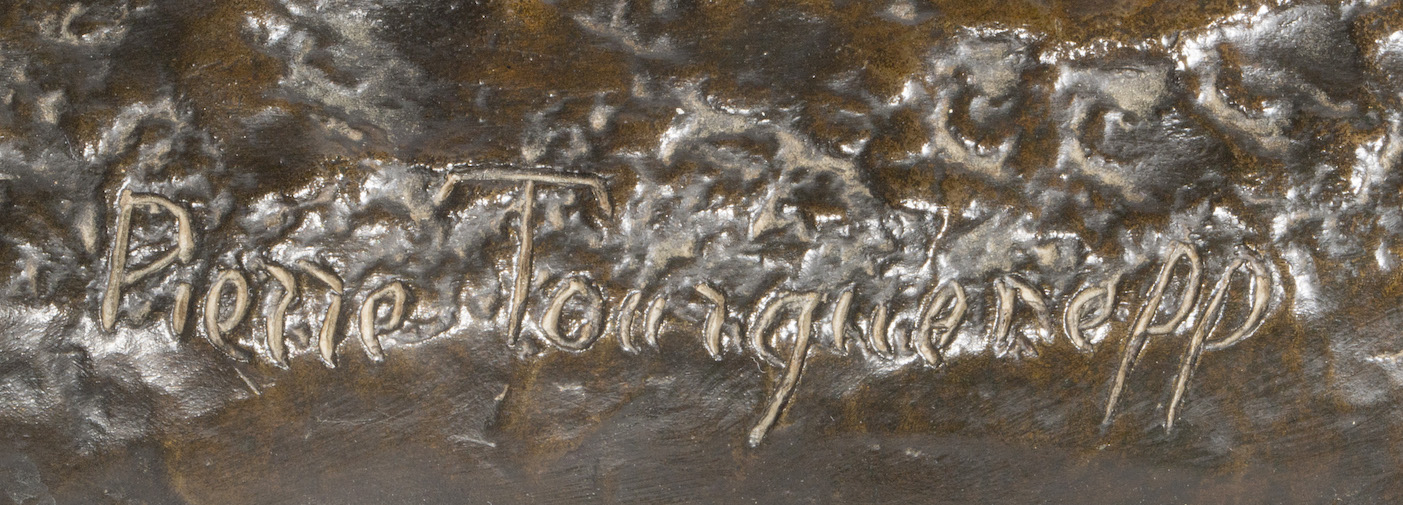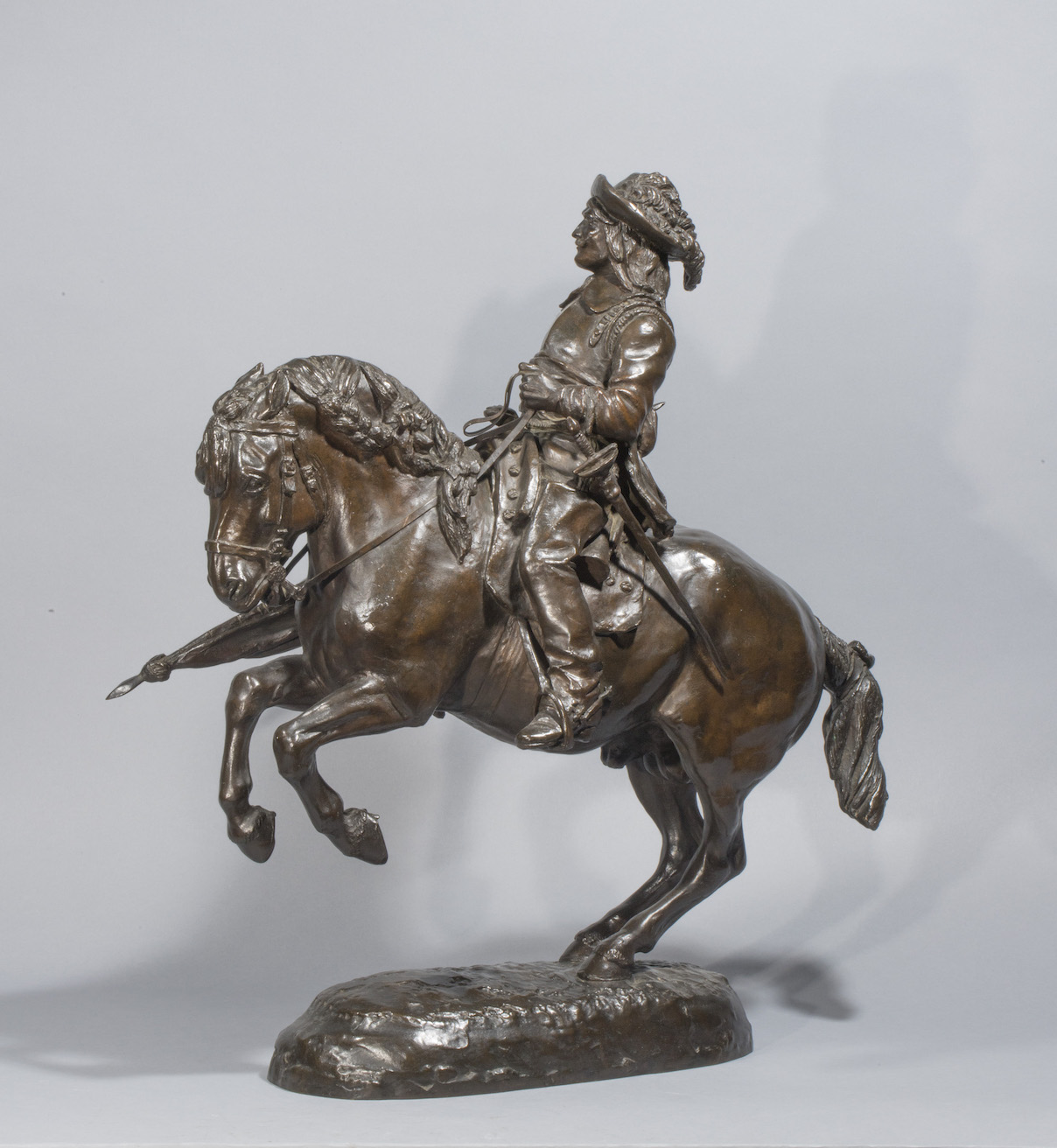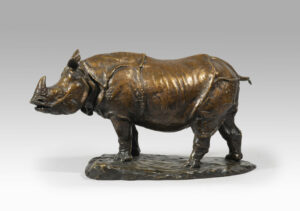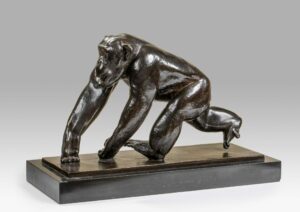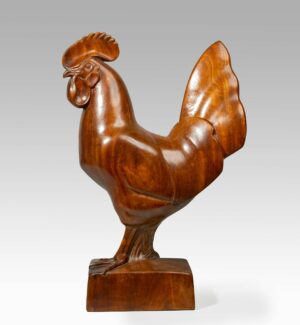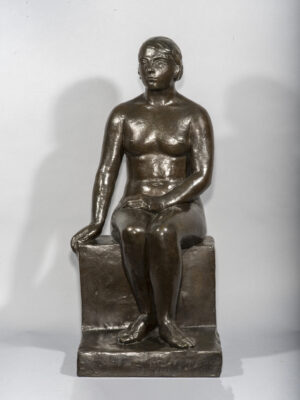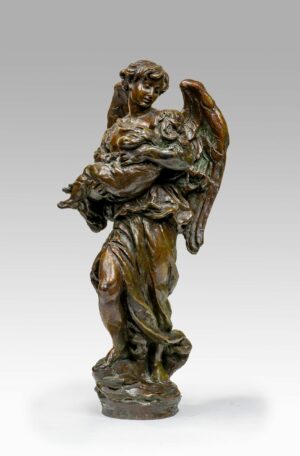Description
A student of Frémiet and born into a family of Russian origin, Pierre Tourgueneff is often associated with animalier sculpture, particularly for his masterful equestrian portraits. However, his oeuvre also includes equestrian figures, predominantly military subjects of his time or of the Napoleonic era.
While this sculpture is an equestrian figure, it stands out for its historical setting. Tourgueneff depicts a standard-bearer of the King’s Musketeers during the reign of Louis XIII, performing the Salute to the Standard. This ceremonial gesture involves lowering the lance bearing the standard to a near-horizontal position and then raising it again in a controlled manner. The salute was traditionally performed for royalty, French Princes, legitimized offspring, and high-ranking officials such as the Marshals of France.
In this sculpture, the salute is performed by a light cavalry soldier of the Musketeers. The depiction is strikingly detailed, albeit with some imaginative elements. During the early 17th century, and in particular when the Musketeers were created in 1622 by Louis XIII, uniforms were not yet standardized. This elite unit was formed by detaching fifty carabineers from the chevau-légers of the King’s Guard to create an independent force during the wars against the Protestants.
It is impossible not to think of the iconic d’Artagnan when observing this musketeer with his long hair, fine mustache, plumed hat, thigh-high boots, and steel-plated cuirass exposing a broad lace collar characteristic of the mid-17th century. He holds the standard in his right hand while gripping the reins of his horse with the left, on the side where his sword is worn.
The Salute to the Standard is rendered with the dynamic energy of a Baroque equestrian portrait. The horse is shown performing a levade or courbette, rearing on its hind legs with its forelegs raised — a pose that demonstrates both the rider’s mastery and the horse’s rigorous training. The horse is further adorned for the occasion, with its mane and tail braided and embellished with ribbons.
To cast his bronzes, Tourgueneff typically worked with the Susse foundry, known for producing a catalog of his works. However, for this meticulously detailed and historically informed sculpture, he chose the esteemed foundry of Gruet the Younger. The founder’s mark confirms the work of Charles Gruet, who also cast for Rodin and died in 1890, indicating that this bronze predates that year.
The wax model was exhibited at the Salon of 1882 but no other bronze example is known.
This piece is probably a unique work, showing off the extraordinary skill and attention to detail of Pierre Tourgueneff.

